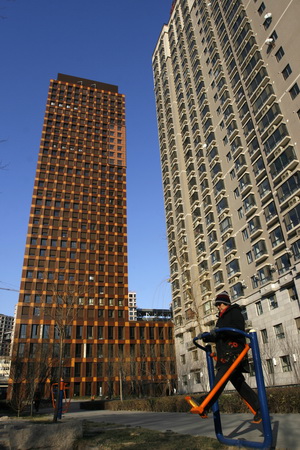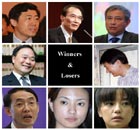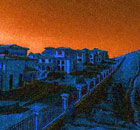Top Biz News
Official: Green design no excuse for housing price hikes
By Cui Xiaohuo (China Daily)
Updated: 2010-03-31 11:22
 |
Large Medium Small |
 |
|
POP Moma in Dongzhimen is known for its energy-efficient buildings. [Xu Xiaolin / For China Daily] |
One of Beijing's vice-mayors has said three-quarters of the city's housing now meets low-emission standards, but some critics say property developers may use green concepts to drive property prices even higher.
Nearly 75 percent of residential buildings in the capital are energy efficient after years of effort, said Chen Gang, Beijing's vice-mayor supervising city construction. The authorities undertook a multi-billion yuan revamp in recent years to expand environmentally friendly infrastructure.
The official's comments are seen by some analysts as the latest signal of local government support for low-emission building methods, which are a relative novelty in China.
But some officials have indicated that environmentally related rebuilding will drive up property prices by five to 10 percent.
"Beijing will continue building more low-emission buildings," the vice-mayor told attendants at an annual convention on energy-saving architecture in Beijing this week.
In response to accusations that developers may simply use green designs to raise real estate prices, another construction official said the authorities will not allow this to happen.
"Environmentally efficient buildings are not expensive buildings and building them is a national policy that the authorities will encourage in the long term. Developers should not take advantage of the concept to create new bubbles in the market," Chen Yiming, head of the energy conservation and science department of the Ministry of Housing and Urban-Rural Construction, said at the same conference.
Replacing outdated building materials with energy-saving ones will increase property costs 5-10 percent, the official added.
Low-carbon designs and energy efficient rebuilding programs have been used worldwide in public, residential and corporate buildings.
| ||||
The planned expansion of the Central Business District in east Beijing will involve energy-saving technologies in the new high-rise office buildings and residential buildings in the area.
As part of a national plan to encourage such buildings, Beijing authorities have spent 32 billion yuan promoting energy saving facilities across the city since 2007.
Last week, the municipal construction authority also proposed that 28 energy inefficient materials be added to a list of items banned from certain types of construction. If these materials are added the total number of banned items will rise from 84 to 112.
The Municipal Housing and Urban-Rural Development Commission suggested some types of energy inefficient lights and heat preservation materials, such as clay, also be banned
Materials on the list are not allowed in commercial buildings taller than 100 m and in public buildings taller than 50 m.














